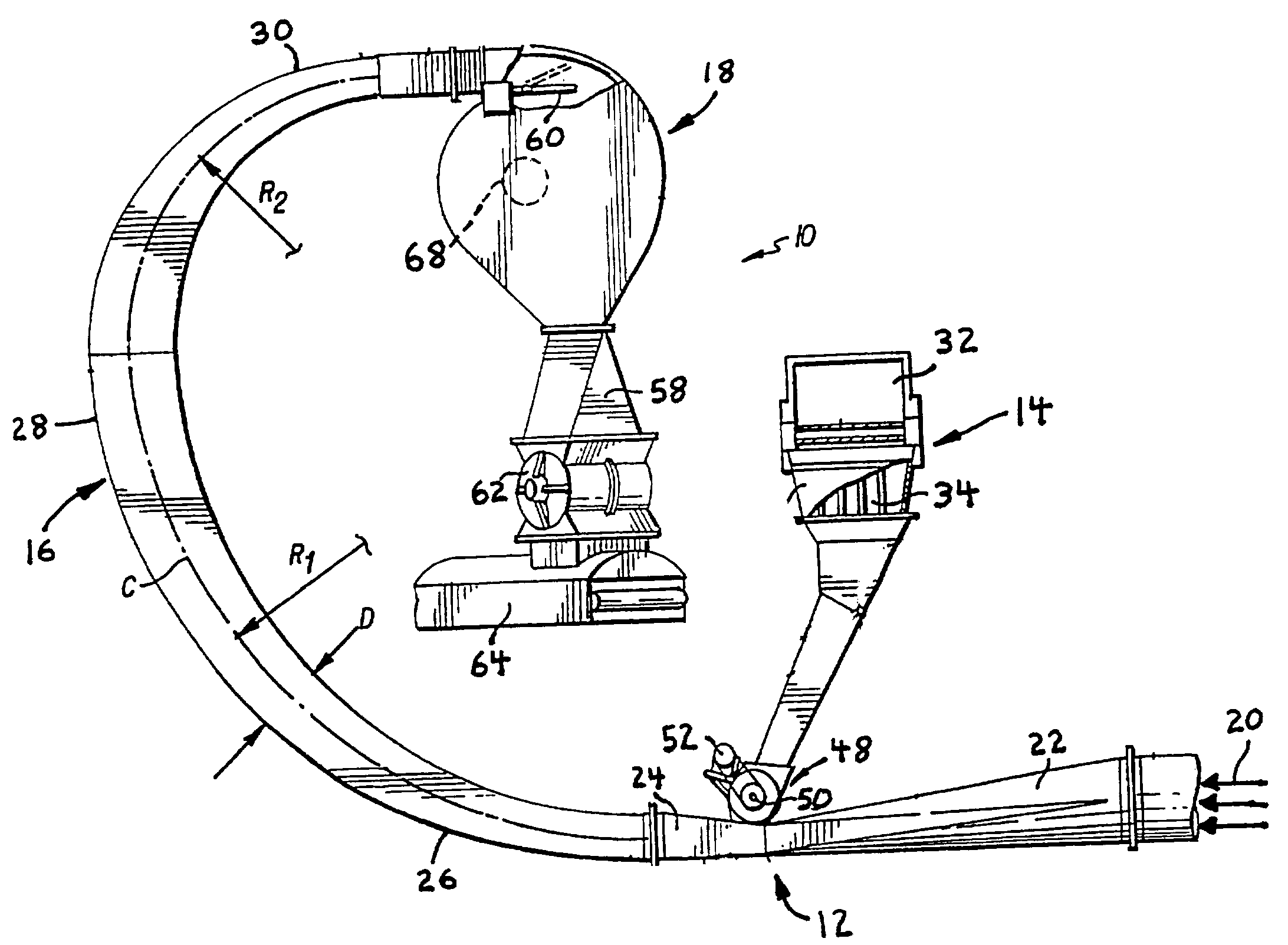Method of expanding tobacco using steam
a technology of expanding tobacco and steam, applied in the field of processing tobacco, can solve the problems of complex process complexity and cost, and achieve the effects of increasing the filling power or filling capacity of tobacco, cost-effective, and streamlined
- Summary
- Abstract
- Description
- Claims
- Application Information
AI Technical Summary
Benefits of technology
Problems solved by technology
Method used
Image
Examples
example 1
[0039]A pilot scale expansion system was constructed. The expansion system is a one-seventy-fifth ( 1 / 75) scale sublimator system, and was constructed based on the geometry of the C-loop technology of R. J. Reynolds Tobacco Company that is of the type set forth in U.S. Pat. No. 5,908,032 to Poindexter et al. The pilot scale expansion system is described with reference to FIG. 1. Dimensions of curvature radii and over-all height are essentially the same as in the full-scale C-loop system. Cross-sectional areas are proportionately the same so as to maintain the same gas velocities in equivalent locations within the C-Loop. To achieve 1 / 75th scale of the commercial C-Loop system, the pilot scale sublimator was constructed 3 inches wide with depths as follows: 2 inches at the tobacco inlet; 7 inches in the widest midpoint in the C as it becomes vertical; and 3.5 inches entering a tangential separator. The sublimator duct is non-circular in cross-sectional shape.
[0040]Burley tobacco cut ...
example 2
[0041]Burley tobacco is processed in essentially the same manner as set forth in Example 1, except the initial temperature of the steam flow was 525° F. The steam treatment process increases the filling capacity of the tobacco so processed by 22%.
example 3
[0042]Burley tobacco is processed in essentially the same manner as set forth in Example 1, except the initial temperature of the steam flow was 650° F. The steam treatment process increases the filling capacity of the tobacco so processed by 30%.
PUM
 Login to View More
Login to View More Abstract
Description
Claims
Application Information
 Login to View More
Login to View More - R&D
- Intellectual Property
- Life Sciences
- Materials
- Tech Scout
- Unparalleled Data Quality
- Higher Quality Content
- 60% Fewer Hallucinations
Browse by: Latest US Patents, China's latest patents, Technical Efficacy Thesaurus, Application Domain, Technology Topic, Popular Technical Reports.
© 2025 PatSnap. All rights reserved.Legal|Privacy policy|Modern Slavery Act Transparency Statement|Sitemap|About US| Contact US: help@patsnap.com


